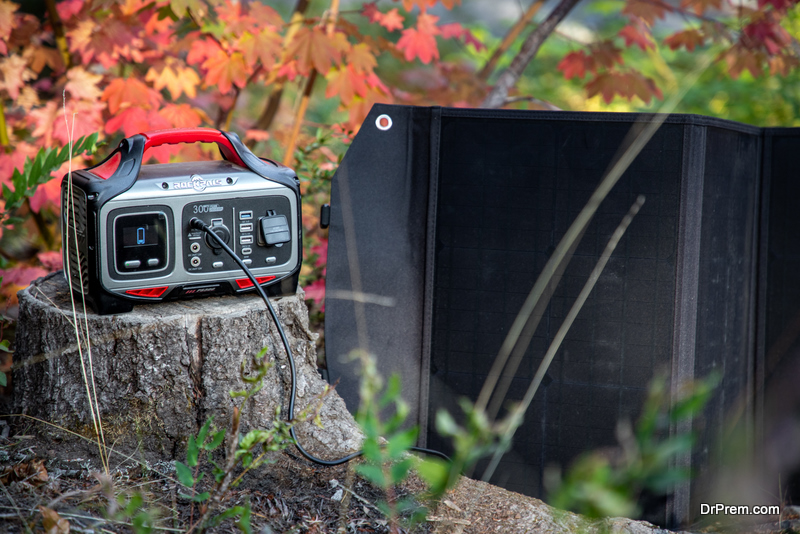Having a generator is necessary, but having it on stand-by during a power outage is not a good idea. Generators work on fossil fuel or propane and can quickly go out of operation because of a lack of power. There are also problems with keeping them in normal conditions, as using them for long periods in hot weather can damage engines and motors very well. That’s why many homeowners with generators use their solar system to run the generator like an attached appliance.
Safety First
Before you connect your solar home generator systems, ensure you understand how much power the generator can produce and how many amps it can handle. Your generator’s capacity in amps is often written on the side of the device. If this information is not available, contact the manufacturer for more details. If you don’t know how much power your generator can produce, you’ll need to find out by reading the owner’s manual or consulting an electrician.
Once you know how much power and how many amps your generator can handle, take a look at your current fuse box. You may need to replace one or more fuses with a larger fuse or replace them with circuit breakers if they’re too small for what you need. If your solar panels are connected to an inverter that has a battery backup, you should disconnect them from the inverter before attaching them to the generator’s circuit breaker panel. Ensure all breakers are off while making any changes; turn off all circuit breakers first and then turn on one breaker at a time until satisfied with its function before proceeding further down this list of instructions.
Get to Know Your Solar System
The first thing you’ll want to do is figure out how your solar system is wired. The battery terminals and solar panel cables must be identified. You’ll also want to know where each of these wires connects to the inverter, which is the device that converts DC power from your solar panels into AC power for use in your home.
Once you’ve identified these connections, you can begin connecting your generator to them. The first step is determining which wires are used for what purpose in your solar system (for instance, whether they’re used for AC or DC power). Then connect those wires directly to those same terminals on your generator. If there are other wires not being used by either of these systems (for instance, ones that simply connect panels), don’t join them now—you can always come back later if necessary.
Prepare the Generator

You’ll need to prepare the generator if you’re planning to connect your generator to a house with solar panels. First, ensure all power is turned off at the breaker box and disconnect the main electrical cable from the house panel. This will ensure no chance of getting shocked while working on your generator. Next, check your generator manual for specific instructions about connecting it to a solar system. If there are no detailed instructions, then proceed with the following steps:
1) Connect one cable end from each panel to the corresponding terminal on your generator’s regulator/receiver unit. Ensure these cables are connected securely so they don’t come loose while running or transporting your generator.
2) Connect a wire from each battery terminal on your generator’s battery bank (if one exists) to its corresponding terminal on the regulator/receiver unit. Again, ensure these connections are secure enough so they don’t come loose while running or transporting your generator.
3) Use another cable from each solar panel output connector (there should be two if possible) and connect it directly to an electrical outlet near where you plan on keeping your generator when not in use (such as inside somewhere). This will ensure that the solar panels are correctly connected to an outlet if you have no other means of powering them.
4) Once your solar panels are connected to the battery bank and regulator/receiver unit, you can turn the generator on and allow it to charge. You should see some lights on the front panel, indicating that it is working correctly.
Prioritize Hot Water Heaters and HVAC Systems
When connecting a generator to your home, it’s essential to prioritize the systems that need power the most. You should first connect your water heater, heating, and air conditioning system. This will ensure that you have hot water and air conditioning for the entire duration of a power outage. You can also connect appliances and techniques necessary to ensure home safety, such as alarms and security systems. Once you’ve hooked up the virtual devices, you can join other methods requiring power. This may include your refrigerator and freezer, microwave ovens, home entertainment systems, and computers. If you have a backup generator system, it’s best to use this only when necessary because they are expensive to run and tends to wear out quickly if used too much.
Hire a Professional
If you’re interested in connecting your house to a generator, it’s essential to research and make sure you work with a professional. You can find contractors through your local utility company or search for “solar power” or “generator repair” on Google. When hiring a contractor, ensure they understand that you have solar panels installed on your home’s roof. They’ll need to know where those panels are located and how many panels there are.
The contractor should also be able to explain what steps need to be taken during the installation process, including any permits from local authorities and whether any additional equipment is required for safety reasons (such as grounding). If you’re in doubt about your contractor’s knowledge, ask them what they know about solar power systems before you hire them.




